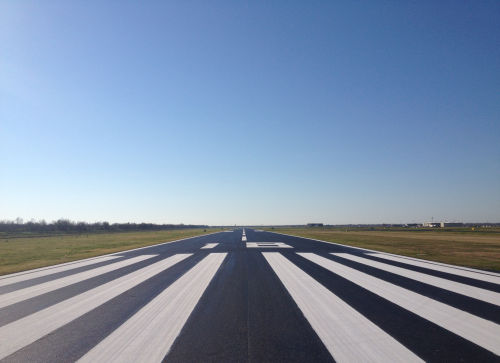
Drug testing essential to job safety
May 21, 2014
Port Fourchon growth unheralded
May 21, 2014Tens of millions of dollars for federal dredging projects in Terrebonne Parish and other Louisiana communities have been lost over a period of decades, port officials in Terrebonne and other parishes confirm, because they haven’t had enough data on how much cargo passes within their jurisdiction to demonstrate the need.
Resulting inability of key waterways to meet the depth needs of shipbuilders and other companies has translated into lost projects for local firms and loss of jobs for the region. In some cases companies have moved from the region and the state, even as Louisiana celebrates the success of a deep-water drilling boom.
“The lack of funds to maintenance dredge the federally authorized Houma Navigation Canal is killing economic development in this region,” Port of Terrebonne Executive Director David Rabalais said, in a summary of communications between himself and various entities, including the U.S. Army Corps of Engineers.
What he and other port directors in Louisiana’s energy sector have discovered is that money which could pay for more extensive dredging projects goes elsewhere, because the federal government prioritizes them by counting apples, while many of the ports only have the ability to count oranges.
The formulas used to award dredging projects as well as some direct grants are based on the tonnage of cargo carried through the ports.
But the ports in many cases don’t have that data, and instead can only reliably count the entrances and exits of vessels overall, information which does little to address the issue because of how federal priorities are tallied.
Interviews with officials at various ports throughout the nation indicate that the system of prioritizing ports works well for container and break-bulk cargo. But oilfield ports which daily haul pipe, rigs, tools and other heavy cargo on supply vessels have been left in the lurch.
Steps are being taken to cure the problem, but a true solution won’t emerge, officials say, until shipping companies voluntarily disclose the tonnage they haul to federal authorities.
There is no legal requirement for them to do so, and the traditionally closed-mouthed industry is in no hurry to change its practices.
So Rabalais and other officials have begun a campaign to convince companies that voluntary reporting is in their best interests.
“Recently, a port tenant spent in excess of $100 million to build a facility based on the Houma Navigation Canal being maintained at its published depth,” a memo from Rabalais states. “That company has to build their vessels to 80 or 90 percent complete and tow them to another facility to finish the construction. This causes their costs to go up on every vessel.”
The Corps, as well as U.S. Sens. David Vitter and Mary Landrieu, have been working with Rabalais and officials from other ports toward solutions and have come up with some temporary workarounds. But permanent fixes are still elusive, placing the ports at the mercy of national political whims.
Some ports feel the sting less than others.
At Port Fourchon, there is one main approach, which Port Director Chett Chiasson says is kept to a depth mariners find workable. The channel, Belle Pass, is dredged to a depth of 28 feet and so accommodates deep-water vessels.
The port reaps benefits from the fact that its cargo relates to paying tenants, whose leases require reporting of tonnage, which is in turn used to qualify the port for grants and to prioritize their dredging needs.
Terrebonne is a different story. The Port of Terrebonne’s legislative authorization states that it has authority overall navigable waterways within the confines of Terrebonne Parish.
That means the cargo leaving on supply vessels from numerous private docks in Cocodrie or Dulac could – if reported – be counted toward the port’s overall cargo numbers.
That cargo, Rabalais maintains, applies to Terrebonne’s ranking in the federal system as much as if it had been loaded from a dock on its navigation canal frontage in Houma.
Nobody disagrees.
But for years, the Corps classified the port within the “Group II: Other Ports” ranking. That’s the cellar of port standings; tonnage was classified as less than 100 tons annually.
That ranking would affect eligibility for federal grants and prioritization for dredging projects.
After years of wrangling Rabalais and Corps officials determined that the classification was incorrect.
A sampling of known tonnage obtained through existing records and the new cooperation of some marine firms resulted in a new ranking of 98th out of 150 “selected U.S. ports,” – the upper tier of port classifications – with a cargo tally of 2,547,057 short tons. A short ton is 2,000 pounds.
But the job of keeping numbers current is not near complete, Rabalais ssaid.
That’s where the cooperation of cargo haulers comes in.
Tonnage reports will become increasingly important as the Port of Terrebonne vies for federal money that would allow the Houma canal to be dredged to a depth of 20 feet.
Rabalais plans a blitz of presentations before industrial trade groups that meet locally and other ways of getting the word out to the sluggish industry he services.
“Recently, a (port) tenant who employs between 250 and 300 employees sent a letter to (us) describing their frustration and disgust because of the tens of millions of dollars of vessel repair work and vessel new construction work that they lose every year because the channel is not maintained to the published depth of 15 feet,” he said. “A large quantity of this work goes to Texas and Alabama. This tenant spent in excess of $50 million constructing their facility based on the HNC depth being maintained at its published depth.”
Whatever answers state government might have are welcome, says Rabalais, to make its own investments pay off.
“Louisiana’s Department of Transportation and Development invested $12 million of Port Priority funds to construct two dry-docks that (we are) leasing to (one) tenant, however, because the HNC is not properly maintained the tenant can’t take full advantage of this investment. A $1 million repair job was lost recently because a vessel drawing 14 feet of water could not come up the HNC. This March the sister vessel is scheduled for similar repair. If the channel is not dredged the tenant will lose this job also. Texas loves our channel maintenance program.”
Another company in the port commission’s jurisdiction that previously provided 1,000 to 1,500 high paying fabrication jobs “has moved a large portion of their work to a yard they purchased in Texas.”
“They can’t continue to compete with the industry because of the lack of maintenance dredging,” Rabalais said. “The jobs provided by that company in our region have been reduced by almost 50 percent.”
He has been getting some help at the state level. State Rep. Gordon Dove is among the local legislators who have been working with federal representatives, for now to ensure enough money for maintenance and in the future – perhaps – for a dredging of the HNC to 20 feet.
“David and the port have done a good job of stepping to the plate and documenting the cargo traveling through the Terrebonne area,” Dove said. “It is important to keep up with cargo tonnage on the water as it is to keep up with takeoffs and landings at airports for the FAA.”
Joe Accardo, director of the Ports Association of Louisiana, said that secrecy among oilfield shippers, fueled by the fiercely competitive nature of the industry, is well-known.
“They want to keep confidential what they are hauling,” Accardo said. “There are millions of tons of cargo and there is no way to certify them.”
State laws could be created to require disclosure, but a likely result of that could be a requirement that the information be shielded from public view.
Information currently disclosed by shippers voluntarily is a matter of public record.
“These types of ports deserve funding on the federal level,” Accardo said, noting that in Louisiana direct employment at ports amounts to more than 70,000 jobs.
One way to bring more revenue into the port maintenance column, he noted, would be to allocate money from the federal harbor maintenance trust fund. Currently, half of that goes into the federal general fund. The other half goes to coastal conservation.
Meanwhile, as more esoteric solutions are sought, Accardo and others with awareness of the port dredging issues say the onus is on shippers and their willingness to voluntarily give up their cargo figures.
“They have to be willing to spend the time and effort and manpower to count and report it,” he said.
Rabalais maintains that the urgency of the matter cannot be overstated.
“This region has pioneered the oil field structure fabrication, marine vessel fabrication and marine vessel repair industries. Most if not all of the oil field structure fabrication, marine vessel fabrication and marine vessel repair was performed in this region for the last 60 plus years,” he said. “Now this region is slowly dying. This death is not being caused because there is little demand for fabrication and repair. On the contrary, there is more work available now and in the foreseeable future than this region has seen in a long time and all indications are that in the next five years the work will ramp up to levels never experienced before by this region. No, it’s definitely not a lack of work that is killing our region; the slow death of our region is being caused by the inability to maintain our channel.”
Mred by a lack of funds to dredge the Houma Navigation Canal, Port of Terrebonne Executive Director David Rabalais has witnessed firsthand the economic impact the waterway’s depth has had on the area.













